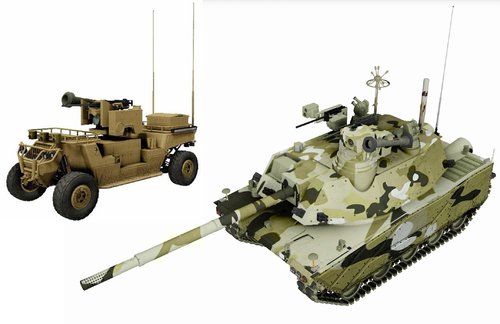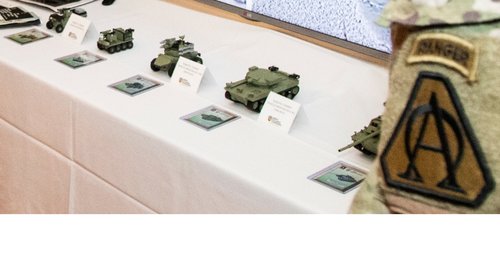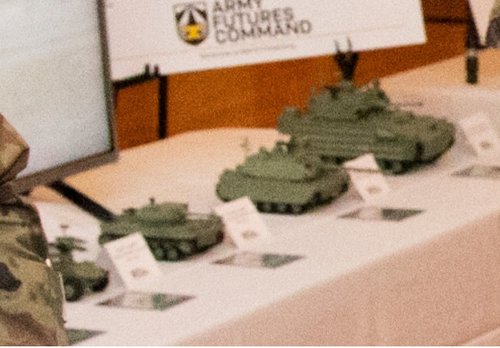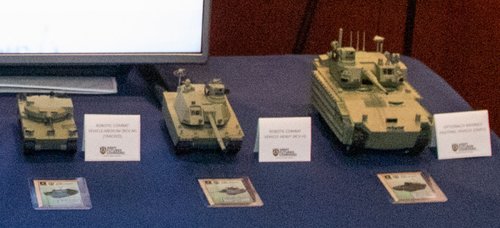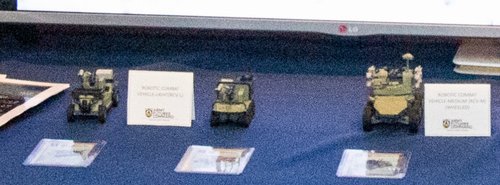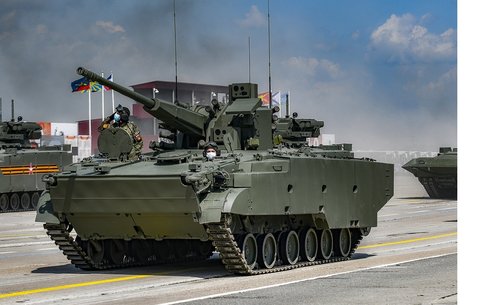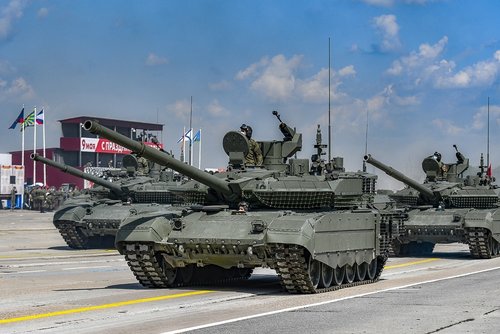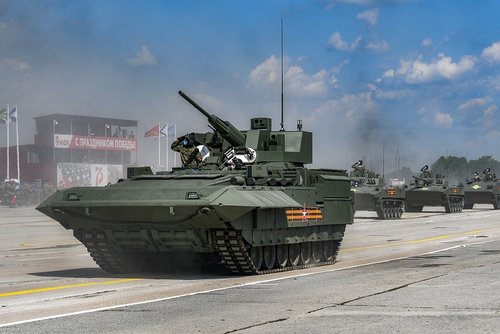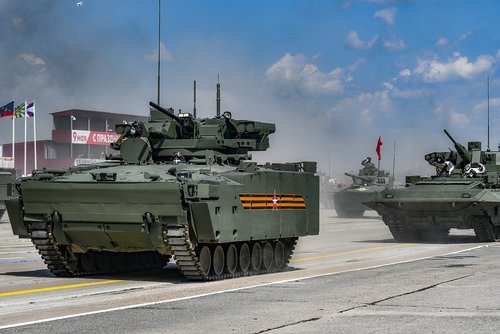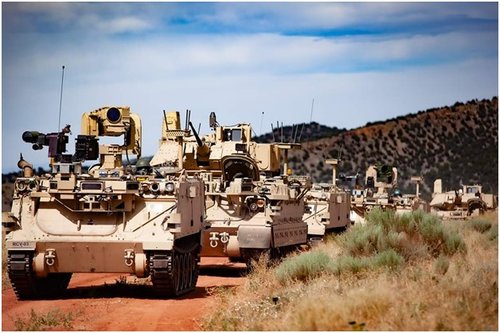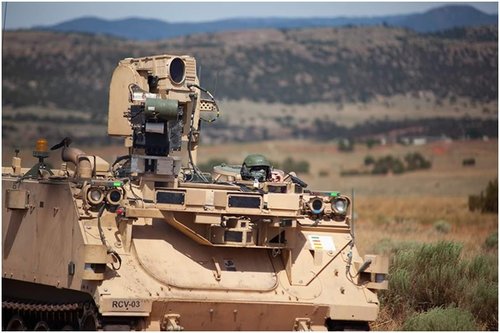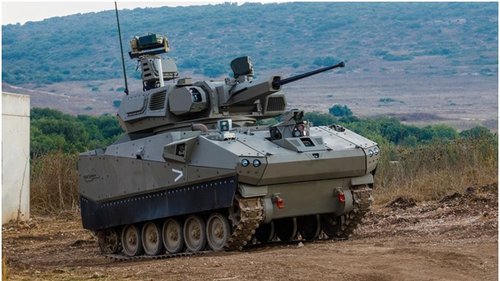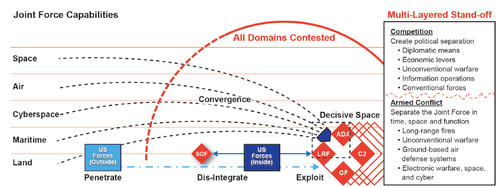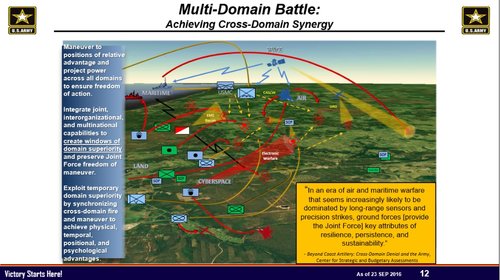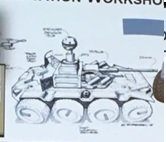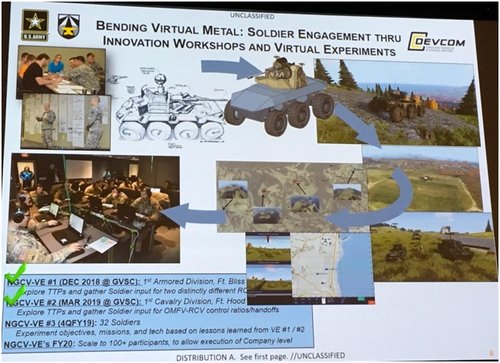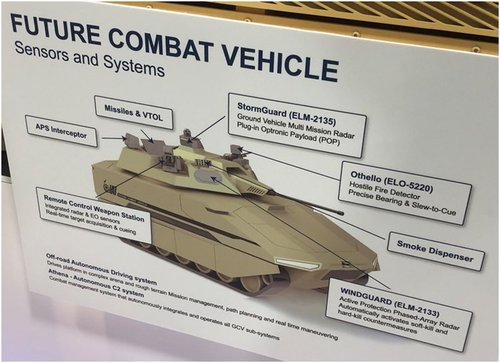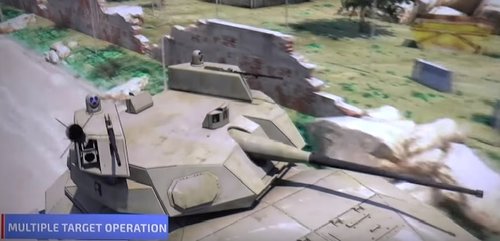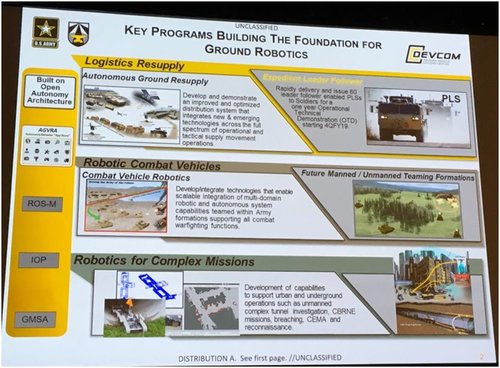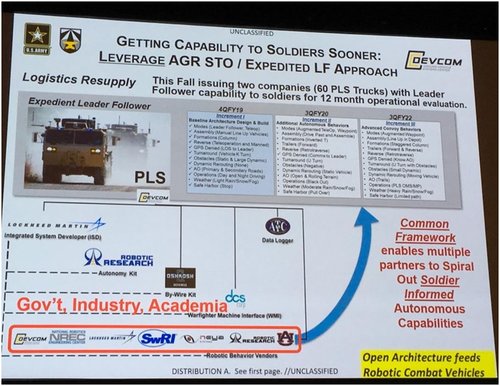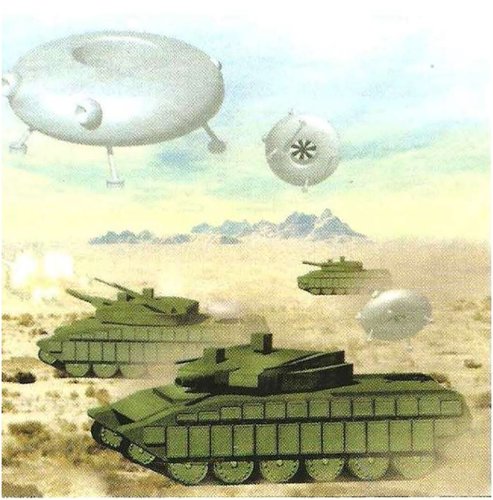In high intensity grd combt is too fast and covering too much territory for dismounts to make sense. Follow on formations w/ wheeled vehicles can carry infantry as was refered to an earlier post. The Israeli's recent Project Carmel tracked vehicles utilizing UAVs to replace dismounts for assaults while simultaneously pursuing 8x8 wheeled APC development, likely for follow on forces.
The higher the intensity, the less ground covered. It's when you have a disparity of forces that one force is potentially able to move over large distances, and even in that case it's anchored to its supply echelons. The area combat can cover hasn't really changed since 1980, because we're still using the same vehicles with the same size of fuel tanks. In fact given the growth in armour and the resultant drop in power to weight ratios, it may well have contracted. Rate of advance for a US reconnaissance platoon, WWII? 35mph. Tactical march rate for an M1A2 platoon on the open road, 2015? 25mph. (Note that that's a combat move for the recce platoon, semi-administrative for the M1A2).
And forget Israel. Israel is a special case. Half or more of their technological and operational drivers don't exist for other nations. Room clearing with micro-UAVs? Great against Hamas in Gaza or Iranian proxies in Syria, try to deploy it against a first line opponent and they'll wheel out the countermeasures. Starting with heavy jamming of your datalinks, counter-fire on your C3I nodes, backtracked via the datalinks, and just plain not cooperating, like stringing a camo net over every entrance so the drone can't get in. And if they go underground, into the sewers, or mouseholing between cellars if it's a country where cellars are a thing, then you face the nightmare of bypassed enemy forces popping up behind you and laying waste to your second echelon (or your laagered first echelon). You need infantry with you to clean the opposition out while you're in contact. Anything else just gives them time to regroup.
A vehicle will need to operate in future US Army Multi-Domain Ops where high speed opportunitistic,
penetration, and local temporary superiority count most. On the distributed battlefield the least amount of personnel and logistics overhead counts also. Motivation for the DARPA GXT, for instance, one-two person crew used to primarily designate targets for CAS and Artillery os the primary goal. The problem w direct fire is the adversary gets to shoot back. Exploiting the penetration, after the fact, could include wheeled agile Mech infantry in 8x8s.
The Israeli Carmel is ironically, not inward deployment focused, but an expeditionary full high intensity conflict capabilty w faster tracked systems (lighweight rollers, rubbers tracks, hybrid-electric, so less fuel dependance, no large guns etc) Carmel's light weight multi-shot APS handles urban combat overtime and agasint indirect fire.
Sufficently speedy, the OFMV would be wasting time clearing rooms w/ single shot suicide UAVs. Simply surpressing the street w/ an armed multi-shot VTOL woild be better.
Lab awards additional funding for research into wide field-of-view image seekers for increased targeting ability in cluttered environments.

defensesystems.com
Since you are forcing a repeat posting about the vehicle being protected for distributed dominance:
If survivablity is so important than vehicle development itself might need be secondary to protection systems. If systems including EM armor, moveable armor, an entire family of various hard/soft kill, and threat based APS systems are to be properly integrated then an APS strategy needs to be made clear.
The development of what Tardec calls "revenge shots" ie the ability to engage the threat munition and then immediately engage the threat launcher, plus long range (potentially indirect fire counter shot capability) APS could well be more important than the vehicle design itself.
The need to advance a APS family even before the vehicle is designed could be a consideration.
The APS infrasture might well characterize the vehicle design, writ large, if the distributed battlefield is the focus.



